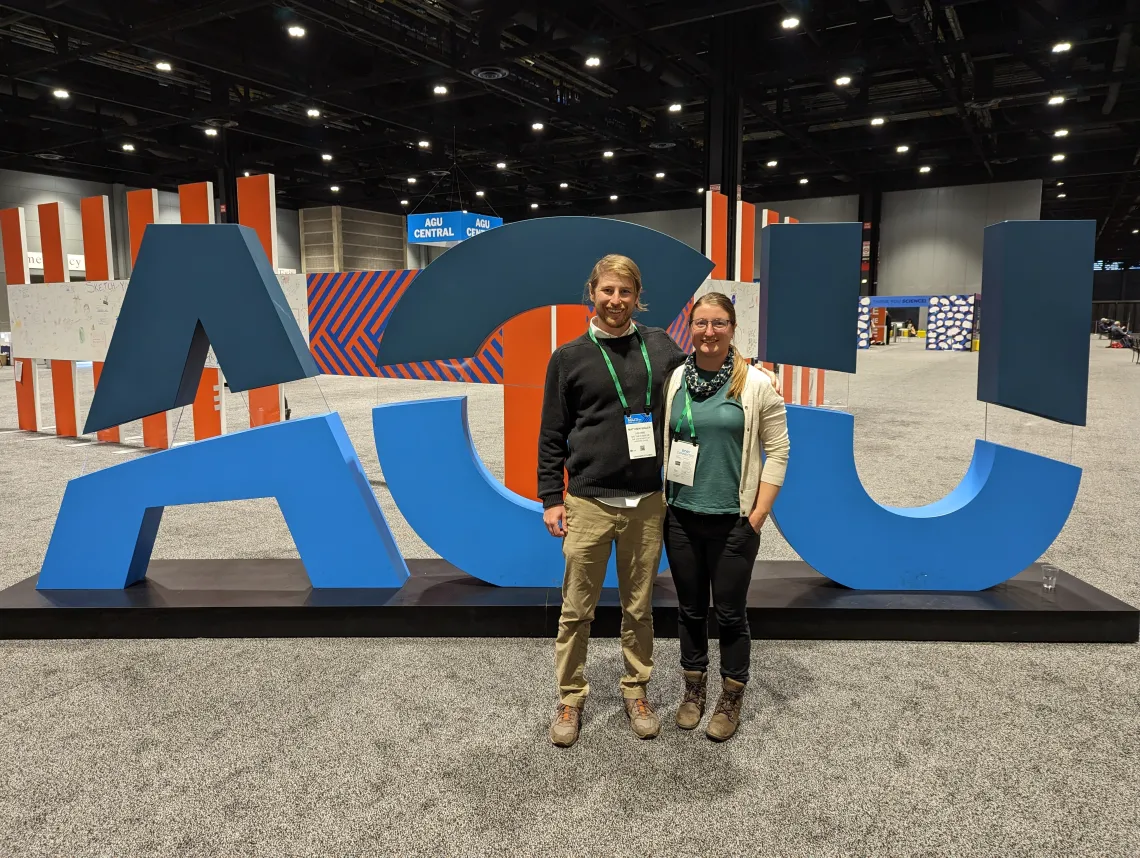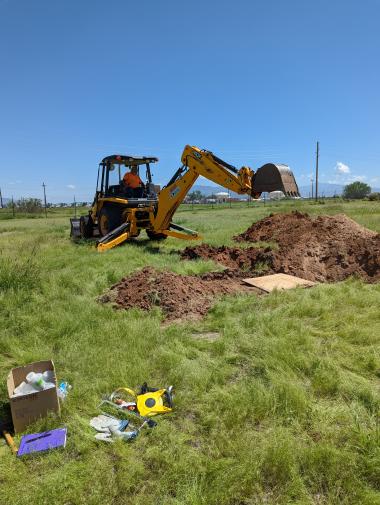A Student's Perspective: Finding a way through a PhD
As his doctoral program comes to an end, Matthew Bigler reflects on his time studying soil, water and PFAS in the Environmental Science program.

When I first decided that I wanted to pursue a PhD in environmental science, I printed off one of my favorite poems and pinned it to the wall of my new office. “Morning” by Federico Garcia Lorca seemed like a good guiding document for the start of my research. This poem, a long wandering tribute to water, can be summarized by the six lines:
It is love of love we drink
When we drink water.
It is love that flows
Gently and divine
It is the life of the world
The story of its soul.
I work in contaminant transport and groundwater remediation. That is, I try to understand how potentially harmful chemicals make their way from points of contamination into our drinking water. The movement of these chemicals are governed by a complex mixture of physical and chemical interactions. Most frustratingly, these interactions are unique for every chemical. From a research perspective, this means you tend to choose a contaminant and stick with it.

Matthew Bigler studies PFAS in soils throughout Arizona and the rest of the United States.
For the past five years, I have been working on a class of emerging contaminants known as per and polyfluoroalkyl substances (PFAS). These chemicals are widely known as “forever chemicals” due to their inability to break down in the environment. This persistence, and the fact that they are broadly used, has led to detectable levels of PFAS in the bloodstreams of most of the Earth’s human population.1
According to the Interstate Technology Regulator Council report2, contaminated water is one of the most significant pathways for PFAS to get into our bodies “In communities near sources of PFAS contamination, exposures that are higher than those in the general population can result from ingestion of contaminated drinking water or consumption of fish from contaminated waters”. Recent studies by the Environmental Working Group have demonstrated that up to 110 million people in the United States are impacted by PFAS-contaminated water3.
My research, which started with the basic question of “How do these contaminants get into our drinking water?”, spiraled down multitudes of different pathways, and has ended up with very fundamental questions regarding how fluid flows through soils and the chemical interactions of the PFAS with the thin layer that divides air from water. This work has taken me from the lab, out in the field (specifically the aquifers of Tucson, Tohono O’odham land since time in Memoria), and all over the country in search of answers.
The deeper I dive into this work, the harder it is to emerge back to the mentality of that first day of my program. The Academy is driven forward by a relentless pursuit of novel insights, and it is easy to get caught up in the rat race. For me, it’s critical to take the time to step back and engage with my initial reasons for starting the program. In this time of reflection, I often revisit “Morning”. This poem reminds me that I got into contaminant transport research because water is what connects us all.
